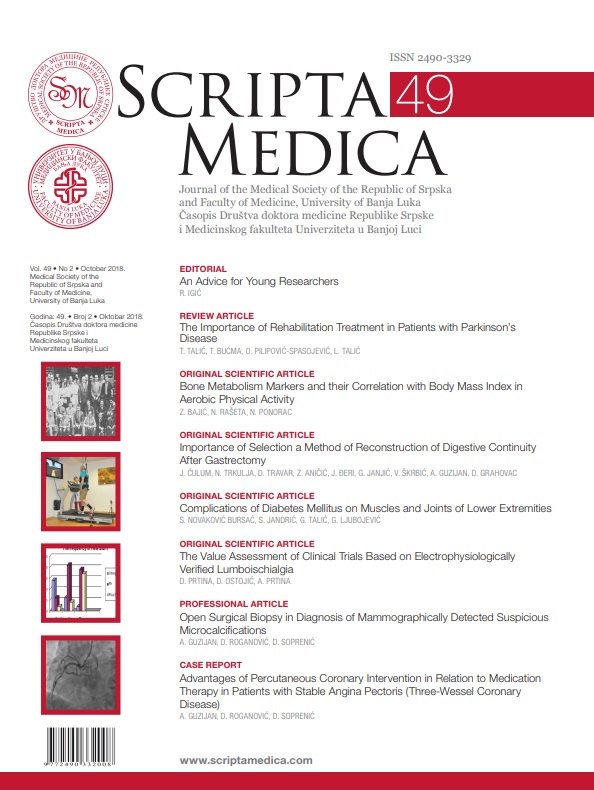Complications of Diabetes Mellitus on Muscles and Joints of Lower Extremities
DOI:
https://doi.org/10.7251/SCMED1802105BAbstract
Introduction: Non-enzymatic protein glycosylation in diabetic patients leads to stiffening of collagen-containing tissues affecting joint mobility. Motor dysfunction in diabetic patients can be detected as muscle weakness or atrophy.
Objective: To determine the presence of muscles weakness and limited joint mobility at ankle (AJ), subtalar (SJ) and first metatarsophalangeal joint (I MTP) in diabetic patients and to determine impact of diabetes duration on those changes.
Patients and Methods: A cross-sectional study was conducted among 100 diabetic patients in “Primary Health Care Centre Banjaluka” in 2014. Function of ten foot and ankle muscles has been evaluated by manual muscle testing. Muscle strength was scored by semiquantitative grading system used in the Michigan Diabetic Neuropathy Score. Range of motion (ROM) at the AJ, SJ and I MTP was measured with goniometer.
Results: The average patients age was 61.91±10.74 and diabetes duration 12.25±8.60 years. The average strength of foot and ankle muscles expressed by muscle score was 11.56±5.08. The average ROM at AJ (47.85°) was significantly decreased compared to the reference value that is 65° (t =-15.378, P=000). The average ROM at SJ (35.10°) was significantly decreased compared to the reference value that is 50° (t =-15.378, P=000). The average ROM at the I MTP (72.70°) was significantly decreased compared to the reference value that is 120° (t =-15.378, P = ,000).
Conclusion: Patients with diabetes have decreased foot and ankle muscle strength, and the average values of the range of motion at AJ, SJ and I MTP, but the duration of the diabetes does not correlate significantly with those changes.

